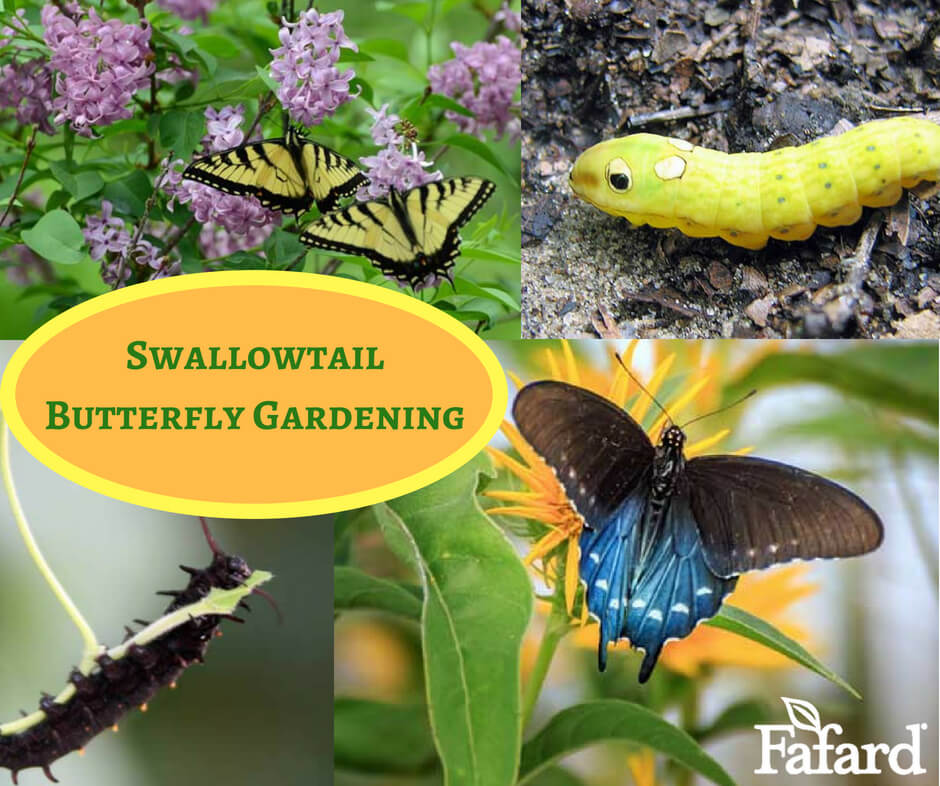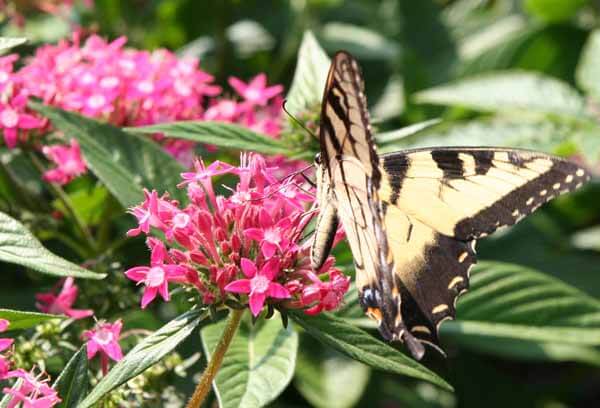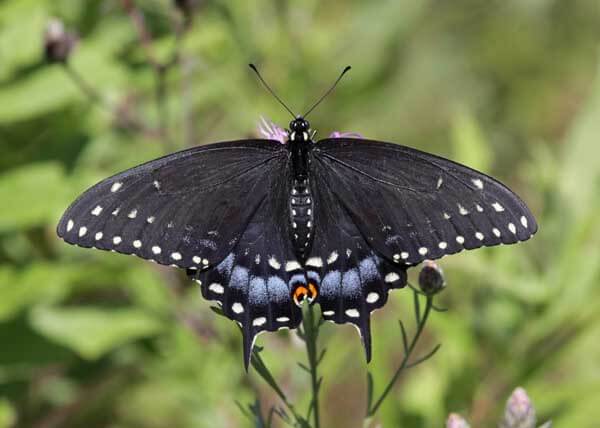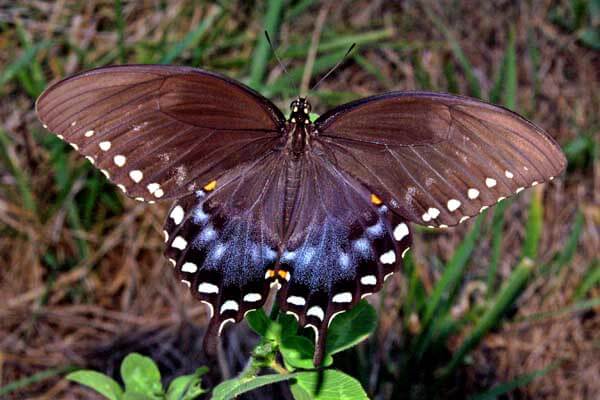
Salt can be a winter lifesaver for cars and pedestrians. It can also be murder on the garden, sometimes literally. Most de-icing salt contains sodium, which is toxic to many plant species. Even when used sparingly, it can find its way onto the leaves and roots of nearby plants, disfiguring or killing them.
One of the best ways to prevent salt damage to your garden is to use plant species that can handle some sodium. The five shrubs described below are a great place to start. They’re perfect for framing and sheltering gardens in salt-exposed sites, such as roadsides and seashores.
Chokeberries (Aronia spp.)

Brilliant foliage in fall, attractive clusters of white flowers in spring, and adaptability to a wide range of soil conditions are among the many merits of these handsome, disease-resistant shrubs from wetlands and uplands of central and eastern North America. Red chokeberry (Aronia arbutifolia) doubles down on the fall color by covering itself with bright red berry-like fruits that persist into winter. Happiest in moist soil, it slowly expands into suckering, 8- to 10-foot-tall clumps that are at their most luxuriant in full sun. Its abundantly fruiting cultivar ‘Brilliantissima’ is particularly showy.
Smaller in size and less flashy in fruit, black chokeberry (Aronia melanocarpa) typically forms a thicketing, 3- to 5-foot shrub with glossy, rich, green leaves and edible black fruits. Varieties of this exceptionally drought-tolerant shrub include the compact growers, ‘Autumn Magic’ and ‘Iroquois Beauty’, as well as ‘Viking’, which is cultivated for its relatively large, tasty fruit that’s excellent for juices, preserves, and baked goods. The fruits of all chokeberries are favorites of birds. Aronia arbutifolia is hardy to USDA Hardiness Zone 4; A. melanocarpa to Zone 3.
Sweet pepperbush (Clethra alnifolia)
The suckering, upright, 3- to 8-foot-tall stems of this eastern North American native are lined with lustrous, serrated, dark green leaves and topped in midsummer with fuzzy steeples of white or pinkish, root-beer-scented flowers. The leaves turn bright yellow in fall, and the persistent, peppercorn-like fruits make a pleasant winter garden feature. Sweet pepperbush comes in numerous varieties, including low-growing ‘Hummingbird’, pink-flowered ‘Ruby Spice’, and late-summer-blooming ‘September Beauty’. All forms do best in moist soil and full to partial sun in USDA Zones 5 to 8.
Inkberry (Ilex glabra)

Its leathery, salt-tolerant, evergreen leaves and rounded habit would recommend inkberry for eastern North American gardens, even if it weren’t native to much of the region. Most varieties become leggy 6- to 8-footers with age, so you might want to opt for a compact, densely leaved cultivar such as the 4-foot-tall ‘Shamrock’. Female inkberries produce small, black, relatively inconspicuous fruits in fall, although white-fruited ‘Ivory Queen’ is a notable exception. All cultivars are hardy in USDA Zones 5 through 8.
Bayberry (Morella pensylvanica)

Recently redubbed Morella pensylvanica, bayberry will no doubt continue to be known to gardeners under its former botanical name, Myrica pensylvanica. A signature species of salt-sprayed coasts from the Maritimes to the Carolinas, it’s literally a natural for salt-tolerant plantings in the eastern U.S. (and an excellent choice for other locations in USDA Zones 3 to 7). All of its parts – from the leathery, deciduous or semi-evergreen leaves to the waxy berries (on female plants) – possess a silver-gray cast and a pleasingly pungent fragrance, made famous by the candles that bear its essence and its name. Mockingbirds, yellow-rumped warblers and other songbirds feed on the fruits in winter.
Lilac (Syringa spp.)

Almost all Syringa species boast moderate to high salt tolerance, reflecting their origins in arid regions of Asia and eastern Europe. Although best known in the form of the ever-popular common lilac (Syringa vulgaris), the genus includes numerous other garden-worthy species and hybrids, many of which are relatively scarce in gardens. Among the best of these for hedging and screening are littleleaf lilac (Syringa pubescens ssp. microphylla ‘Superba’), well worth growing for its aromatic, pale pink flowers that appear in late spring and summer on dense, dainty-leaved, 6-to 8-foot plants; cutleaf lilac (Syringa protolaciniata), distinguished by its deeply lobed leaves, compact arching habit, and pale lilac-purple spring flowers; and Chinese lilac (Syringa × chinensis), which in its best forms (such as ‘Lilac Sunday’) weights its stems with armloads of pale purple flowers in mid-spring, a few days before common lilac hits its stride. Any of the above would make an excellent screen or hedge in a sunny site in USDA Zones 5 to 8.
Whatever their salt-tolerance, all your plants will do better if you take measures to build their soil and to reduce their exposure to sodium. Apply an inch or two of Fafard Premium Natural & Organic Compost or several inches of shredded leaves in fall or spring to boost and maintain the levels of sodium-neutralizing organic matter in your soil. In addition to its many other benefits, mulch also lessens surface evaporation, thereby increasing soil moisture and lowering salt concentrations.
You can reduce the amount of incoming salt by screening planting areas with structures and salt-tolerant plants, by grading the soil to divert salt-laden surface water, and by using sodium-free de-icers, such as magnesium chloride, on your driveway and paths. The right plants and the right care can go a long way toward making your garden safe from salt.






























 trigger a major outbreak of water sprouts, which should be removed in late spring (by the hand-pulling method) or summer.
trigger a major outbreak of water sprouts, which should be removed in late spring (by the hand-pulling method) or summer.